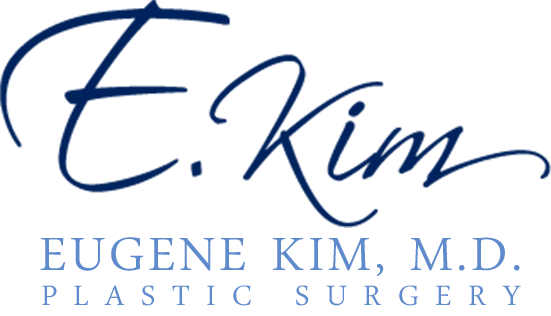 Breast implants can be a life-changing decision, enhancing self-confidence and body image. However, for some individuals, these implants may become hard over time, leading to discomfort and concern. One common reason for this issue is a condition known as capsular contracture. In this blog post, we will explore why breast implants can become hard and what steps you can take to address this problem, including breast revision options. Board certified plastic surgeon Dr. Eugene Kim provides treatment of hardened breast implants to patients in Beverly Hills, Los Angeles, Santa Monica, West Hollywood, CA, and surrounding communities.
Breast implants can be a life-changing decision, enhancing self-confidence and body image. However, for some individuals, these implants may become hard over time, leading to discomfort and concern. One common reason for this issue is a condition known as capsular contracture. In this blog post, we will explore why breast implants can become hard and what steps you can take to address this problem, including breast revision options. Board certified plastic surgeon Dr. Eugene Kim provides treatment of hardened breast implants to patients in Beverly Hills, Los Angeles, Santa Monica, West Hollywood, CA, and surrounding communities.
Understanding Capsular Contracture
Capsular contracture is a medical condition where the scar tissue, or capsule, that naturally forms around a breast implant tightens and hardens. This can cause the breast to feel unusually firm, and in more severe cases, it can lead to pain and visible changes in the shape and position of the implant. The condition can vary in intensity, ranging from mild discomfort to significant distortion and hardness. Factors that can contribute to the development of capsular contracture include infection, hematoma, and the type and placement of the implant. The condition can occur at any time after breast augmentation, sometimes years after the initial surgery. It’s important to monitor your implants for any changes and consult with your healthcare provider if you notice any signs of increased firmness, discomfort, or altered breast appearance. A timely diagnosis can help in managing the condition effectively and maintaining the desired aesthetic results.
Symptoms To Watch For
Symptoms that may indicate capsular contracture include increased firmness in the breast, changes in breast shape, discomfort or pain, and visible rippling or distortion. While some firmness is normal post-surgery, noticeable changes in the breast’s feel or appearance warrant attention. If you experience persistent discomfort, it may be a sign that the scar tissue around the implant is hardening. Additionally, if you observe any shifts in the position of the implant or changes in how your breast looks, it’s crucial to consult with your healthcare provider. Rippling or distortion can also signal that the capsule is tightening around the implant, affecting its shape. Being vigilant about these symptoms can help in addressing the issue early and maintaining the desired results of your breast augmentation.
Factors That Increase Risk
Certain factors can elevate the risk of developing capsular contracture. Smoking is a notable risk factor, as it can impair healing and increase the likelihood of complications. A history of radiation therapy to the breast area also raises the risk due to changes in the tissue caused by radiation. Infections, even minor ones, can contribute to the development of this condition. Hematoma, or bleeding into the pocket where the implant is placed, is another risk factor. The type and texture of the implant itself can play a role; for example, some studies suggest that textured implants may have a different risk profile compared to smooth implants. Additionally, the placement of the implant, whether above or below the muscle, can influence the chances of capsular contracture. Understanding these factors can help guide patients and surgeons in making more informed choices during the breast augmentation process, potentially minimizing the risk of complications later on.
Diagnosis And Evaluation
Diagnosing capsular contracture involves a detailed physical examination conducted by a qualified plastic surgeon. During this assessment, the surgeon will evaluate the degree of firmness in the breast, any visible distortions, and other symptoms you may be experiencing. Imaging tests such as ultrasound or MRI may be utilized to get a clearer view of the implant and the surrounding tissues, helping to confirm the diagnosis and rule out other potential issues.
A comprehensive evaluation is essential to understand the severity of the condition and to develop an effective treatment plan. The physical exam typically includes palpating the breasts to feel for any irregularities or increased firmness. The surgeon will also ask about your medical history, including any previous surgeries, infections, or other conditions that might contribute to capsular contracture.
Imaging tests are particularly useful in identifying the extent of the contracture and any complications like implant rupture or fluid accumulation. Ultrasound can provide real-time images, while MRI offers a more detailed view, especially useful for more complex cases. These diagnostic tools aid in planning the appropriate course of action, whether it be non-surgical management or surgical intervention.
Early diagnosis can make a significant difference in the outcome, allowing for timely and more effective treatment options to be explored.
Treatment Options For Capsular Contracture
Treatment for capsular contracture depends largely on the severity of the condition. For mild cases, non-surgical approaches such as massage, external ultrasound therapy, or prescribed medications might be sufficient to manage symptoms and improve breast softness. However, for more severe cases, surgical intervention is often required.
A capsulectomy is a common surgical procedure used to treat capsular contracture. During this procedure, the hardened scar tissue around the implant is removed. The implant itself may either be replaced with a new one or repositioned to a different location within the breast. This helps to reduce the risk of the contracture recurring.
Another surgical option is called a capsulotomy, which involves making incisions in the scar tissue to relieve tightness without fully removing the capsule. This can also help restore a more natural feel and appearance to the breast.
In some cases, complete breast revision surgery may be necessary. This involves not only addressing the capsular contracture but also potentially replacing the implants and correcting any other issues that may have arisen from the original augmentation. This comprehensive approach can provide a more aesthetically pleasing result and relieve symptoms.
It’s essential to discuss with your plastic surgeon which treatment option is best suited for your specific situation, taking into account your medical history and aesthetic goals.
Preventative Measures
To minimize the risk of developing capsular contracture, certain preventative measures can be adopted. Selecting the right type and placement of implants is crucial; your plastic surgeon can guide you in choosing options that may lower the risk. Post-operative care is equally important; adhering strictly to your surgeon’s instructions regarding wound care, activity restrictions, and medication can aid in optimal healing. Avoiding smoking is another critical step, as smoking can impair the body’s healing processes and increase the likelihood of complications. Some surgeons also recommend regular breast massages post-surgery to help keep the capsule from hardening, although the effectiveness of this approach can vary. Open communication with your plastic surgeon is key—don’t hesitate to discuss any concerns or preventive strategies tailored to your situation.
The Importance Of Follow-Up Appointments
Follow-up appointments with your plastic surgeon play a critical role in the long-term success of your breast augmentation. These visits are essential for monitoring the condition of your breast implants and ensuring that any potential issues are identified and addressed early. During these appointments, your surgeon will assess the overall health of your breasts, checking for any signs of complications such as capsular contracture, implant displacement, or other abnormalities.
Regular check-ups allow for ongoing evaluation of the implants’ position, texture, and appearance. They also provide an opportunity to discuss any changes or concerns you may have noticed, ensuring that even minor issues are managed promptly. Imaging tests like ultrasound or MRI might be recommended during these appointments to get a detailed view of the implants and surrounding tissues.
These appointments are also a good time to review post-operative care instructions and make adjustments if necessary. Whether it’s advice on lifestyle changes, medication adjustments, or physical activity recommendations, these follow-ups are tailored to support your recovery and long-term results.
Additionally, follow-up visits help maintain open communication with your surgeon, which is crucial for addressing any questions or anxieties you might have regarding your breast implants. This ongoing dialogue helps build trust and confidence in your care plan.
Consistent follow-up appointments significantly contribute to the overall success and longevity of your breast implants, ensuring that both aesthetic outcomes and your comfort are preserved.
When To Consider Breast Revision Surgery
Persistent pain, significant changes in breast appearance, or emotional distress due to hard implants are strong indicators that it might be time to consider breast revision surgery. This procedure aims to correct issues arising from a previous breast augmentation, restoring both comfort and aesthetic appeal.
Breast revision surgery is particularly beneficial for those experiencing capsular contracture, where the scar tissue around the implant tightens and hardens. By addressing this issue surgically, you can alleviate discomfort and improve the overall feel and look of your breasts. Surgical options, such as capsulectomy or capsulotomy, can remove or release the tightened scar tissue, offering a solution to the hardness problem.
In addition to physical discomfort, emotional well-being is a critical factor. The dissatisfaction with the feel or look of your breasts can take a toll on your mental health and self-esteem. Breast revision surgery can address these concerns, offering a renewed sense of confidence and satisfaction with your body.
Consulting with a qualified plastic surgeon is crucial for determining whether breast revision is the right option for you. They will evaluate your specific situation, discuss potential risks and benefits, and guide you through the available surgical options. This collaborative approach ensures that your aesthetic goals and comfort are prioritized, leading to a more satisfactory outcome.
In summary, if you’re grappling with hard breast implants and their associated challenges, breast revision surgery might be the key to achieving the results you desire.
Contact the Office of Beverly Hills Plastic Surgeon Dr. Eugene Kim
Click here see more plastic surgery procedures and treatments performed by Board Certified Plastic Surgeon, Dr. Eugene Kim on patients in Beverly Hills, Los Angeles, West Hollywood, Santa Monica, CA and surrounding areas or call 310-271-6996 to schedule a consultation.
